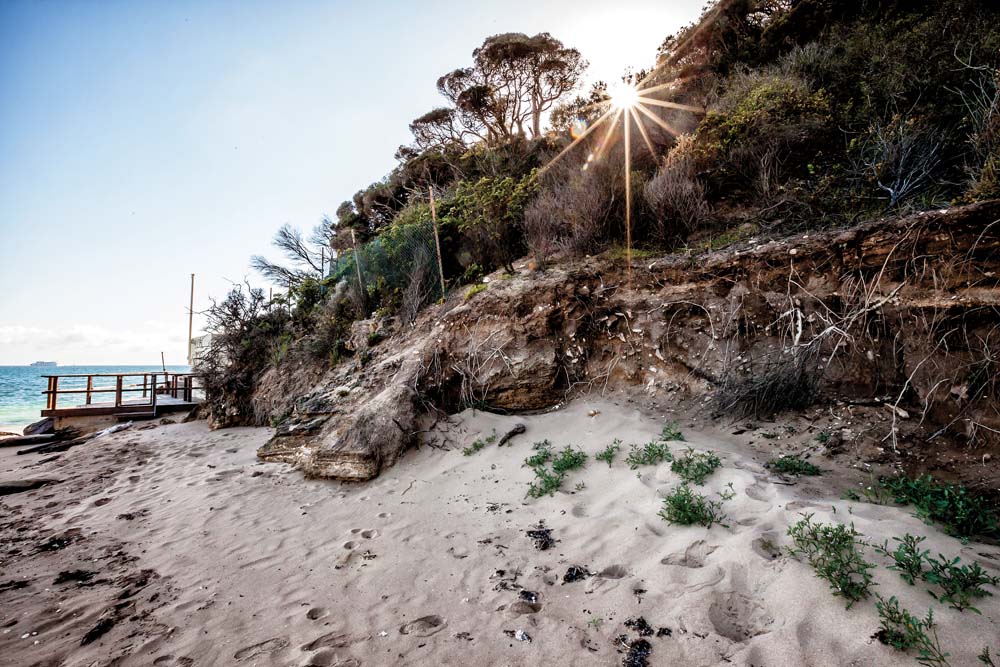
“If the waves are not stopped within the next 12 months the erosion on the cliff will cause their beach to close and all the trees will have to be removed before they fall over,” he said.
Mr Clemenger has been holidaying at his parent’s house for the past 54 years. “It’s where my soul lives,” he said.
“We need to stop the waves and slow the water to protect the beach and repair the damage before the cliff collapses and the Lord Mayor’s beach is gone forever.”
In contrast, sand infill at the Point King beach was so severe that space under boatsheds that previously housed dinghies was now full of sand, he said.
“I understand the problem: it is ‘Who is going to pay to fix all this?’” he said.
“No [government] department is responsible [and] who would want this expense within their budget?”
Mr Clemenger said the beach-erosion problem was “much worse than 12 months ago”.
“Every incoming tide the beach gets smashed [by large weaves] and what was a winter-storm occurrence now happens all the time,” he said.
“In the end if they do not put up a wall and a rock groyne the pier will be decimated. Already two large trees in the pub grounds have had to be taken down and soon the remaining cypress pines will have to go or they will tumble onto the beach as the cliff itself gives way.”
Mr Clemenger suggests placing rock revetments in sections at irregular intervals from the Quarantine Station all the way to the pier. These would extend 20-30 metres into the sea allowing natural flows but still providing wave protection for the beach.
Last month, energy, environment and climate change minister Lily D’Ambrosio backed plans to build a rock wall to protect Portsea beach, rather than off-shore dredging or a breakwater.
She told state parliament the rock wall was a preferred option of consultants Advisian, which collected wave and sediment movement data and modelled the coastal processes at the popular beach.
Their data modelling assessed six options for the long-term protection of the foreshore and the possible restoration of the former sandy strip.
“The decision to select the … rock wall was based on the need to protect the foreshore environment from the impact of swell waves,” she said.
“The other options, particularly the off-shore dredging and the breakwater, were not preferred due to environmental uncertainties and potential environmental impacts.”
The cost of the rock wall project is put at $3 million.
First published in the Southern Peninsula News – 17 October 2017